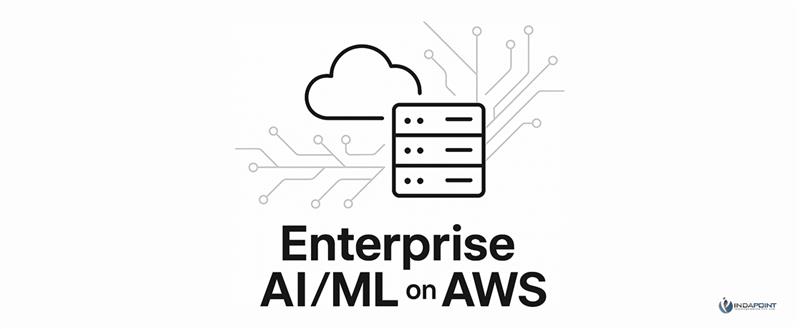LlamaIndex Development Services for Businesses
We provide LlamaIndex development services for businesses looking to transform their private datasets into powerful AI tools. Our solutions create scalable, intelligent systems by combining LLMs with custom data repositories.
Custom LlamaIndex Solutions
Develop enterprise-grade solutions that merge structured and unstructured data—from databases, files, and APIs—with LLMs like GPT, improving contextual intelligence and automation accuracy.
Contextual AI Applications Built on LlamaIndex
Build AI systems that use your internal knowledge to enable search optimization, intelligent decision-making, and data-driven automation across teams.
Domain-Specific Chatbots and Assistants
Develop chatbots and virtual agents that combine LLM performance with your business data. With LlamaIndex, deliver responses that are accurate, industry-specific, and real-time.
Integrated Knowledge Systems
Connect CRMs, wikis, internal docs, and knowledge bases to LLMs using LlamaIndex, ensuring consistent answers derived from your private data stores.
LlamaIndex AI Consulting
Our team offers full-stack consulting services, including architecture, model integration, and custom development. We specialize in scaling LlamaIndex-based solutions for complex enterprise needs.
Scalable Architecture for GPT-Based Systems
Design efficient AI systems that handle real-time data interaction with fast response times. We ensure your platform runs smoothly using LlamaIndex with GPT models.
Continuous Optimization and Support
Stay future-ready with model retraining, data updates, and real-time performance monitoring. Our team ensures your LlamaIndex-powered AI evolves with your data.
Unlock the potential of your visionary project with our expert team. Contact us today and let's work together to bring your dream to life.
Embark on Your Visionary Project
What is LlamaIndex and Why Choose It?
It’s a cutting-edge data framework that allows LLMs like GPT to interact meaningfully with your business content—turning them into context-aware AI agents that deliver insights grounded in your data.
Business-Centric Understanding
LlamaIndex enables GPT models to access and process internal business data, ensuring LLMs generate relevant, on-brand answers every time.
High-Precision Data Retrieval
Index structured and unstructured content to empower your apps with intelligent search and fast, accurate data access.
Live Data Integration
Enable AI to respond to real-time queries by integrating APIs, databases, and repositories through LlamaIndex pipelines.
Enterprise-Scale Flexibility
Our solutions scale from MVPs to enterprise-wide deployments, from support tools to internal analytics platforms.
GPT Compatibility and Expansion
Seamlessly integrate LlamaIndex with GPT models, Claude, and LLaMA for enhanced understanding, memory, and decision support.

Innovation-Driven Community Support
Benefit from continuous advancements and support within the LlamaIndex open-source community, ensuring your business stays ahead in AI innovation.
Our Clients
500+ globally customers














Best Practices for LlamaIndex with GPT Models
We follow best practices for LlamaIndex with GPT models to ensure optimal results, including intelligent chunking of data, prompt refinement, and minimal latency integration for scalable enterprise use. These methods minimize hallucination and maximize relevance, even with complex business data.
20+
Years Experience
50+
Talented Squad
1200+
Happy Clients
500+
Projects
Unlock the potential of your visionary project with our expert team. Contact us today and let's work together to bring your dream to life.
Embark on Your Visionary Project
Our Blogs: Feel the Beat of Innovation
Stay in sync with the latest in technology and business transformation.

AI Agents in Action: How Enterprises Can Operationalize Autonomous Intelligence Across Workflows
AI agents are transforming enterprise automation with agentic AI and multi-agent systems. From RAG chatbots to Claude agents and orchestration layers, they streamline enterprise AI workflows. Businesses can now build no-code AI tools, accelerating their business AI strategy. Operationalizing these tools empowers scalable, intelligent automation across finance, IT, and customer service—marking a new era in enterprise AI.
June 30,2025

AWS Services for AI/ML: The Definitive Enterprise Guide
Explore how AWS empowers enterprises with scalable AI/ML solutions. From data storage and model training to MLOps and edge AI, this guide covers the full spectrum of AWS services. Learn how leading companies streamline development, ensure compliance, and accelerate innovation with AWS’s powerful AI/ML ecosystem.
June 27,2025

Comparative Analysis of AI Development Platforms
This blog explores and compares leading AI development platforms like AWS SageMaker, Azure ML, TensorFlow, and Keras. It covers their strengths, ideal use cases, pricing, real-world applications, and emerging trends like AutoML and Edge AI. Whether you're a startup or an enterprise, this guide helps you choose the right platform to scale your AI journey effectively and efficiently.
June 23,2025
Frequently Asked Questions
-
What is LlamaIndex and how does your company improve data retrieval?
LlamaIndex is an advanced platform that indexes and connects custom data with language models. As a leading LlamaIndex development company, IndaPoint uses semantic search and enriched indexing to enhance retrieval accuracy and contextual relevance.
-
Can a LlamaIndex company integrate my internal systems with GPT?
Yes! A trusted LlamaIndex company like IndaPoint integrates CRMs, wikis, and internal files with GPT using LlamaIndex—enabling precise, data-driven responses.
-
What are the best practices for LlamaIndex with GPT models?
Key best practices for LlamaIndex with GPT models include semantic chunking, optimized indexing, and prompt tuning. IndaPoint ensures low latency and high relevance in AI outputs.
-
What are the business benefits of using LlamaIndex?
LlamaIndex improves efficiency by enhancing search accuracy, reducing retrieval time, and enabling smarter AI-powered decisions across enterprise operations.
-
How does custom data indexing support LlamaIndex development services for businesses?
Our LlamaIndex development services for businesses include custom indexing that boosts speed and accuracy, helping your teams find the most relevant data effortlessly.




